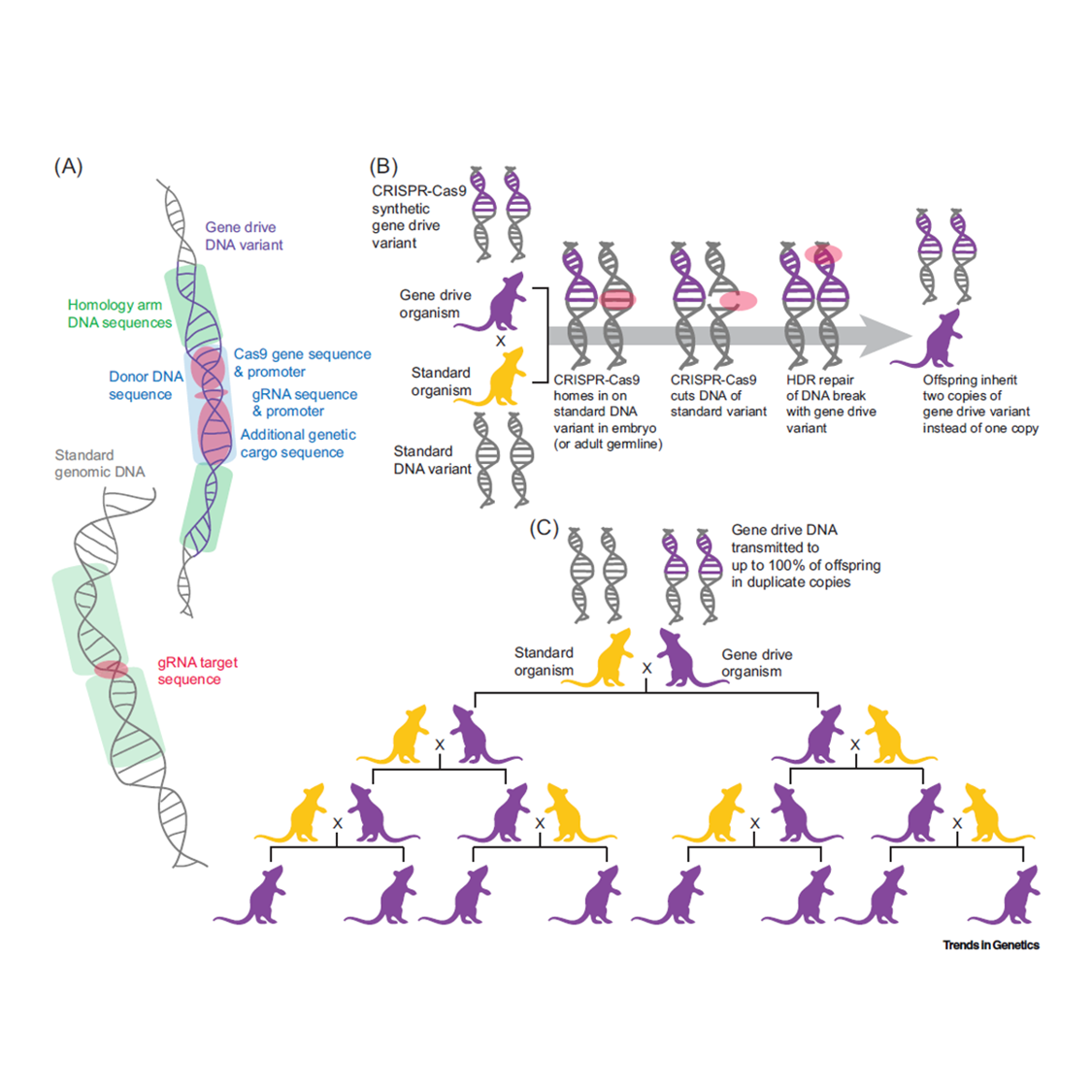The advent of CRISPR-Cas9 technology has been revolutionary, but it has also been highly controversial. In an opinion paper published in the journal Trends in Genetics, evolutionary geneticist Asher Cutter highlights the importance of coining the term ‘genetic welding’ for the anthropogenic manipulation of genetic drive made possible by tools such as CRISPR-Cas9. Separating this process from other processes that influence evolution might be fundamental to ensuring proper consideration is given to the potential future outcomes of genetic welding.

Image Credit: Cutter, 2023
Producing gene drives artificially
Gene drives are a natural phenomena where genetic elements do not follow the typical hereditary rules. They grant themselves an advantage by manipulating reproduction to increase their likeliness of being transmitted to the next generation. This results in the genetic elements proliferating throughout a population, thus overriding natural selection.
Thanks to novel technology, such as CRISPR-Cas9, it is possible to replicate this natural process artificially. With this technology, scientists can do things such as cause extinction or make an endangered species more resilient to disease. However, a key feature of genetic drive is that it makes genetic elements capable of increasing their prevalence despite fitness costs to the organism. In addition, scientists have yet to understand the full implication of using gene drives to eliminate a species or help one thrive.
Why do we need to define genetic welding?
The process of artificially producing gene drives has the impact of altering the genetic composition of a population. Cutter suggests that this anthropologic process should be defined so that it is clear it is distinct from similar processes such as endogenous genetic drive and artificial selection. Cutter proposes we use the term “genetic welding”. In his opinion paper, he outlines his purposes for coining this phrase: emphasize the role of human intervention; identify it clearly as a process (as a verb); avoid other words (e.g., artificial, synthetic, fusion, engineering) in common use with separate meanings in other areas of biology; and concisely distinguish it from endogenous genetic drive in just two words.
In the field of genetics, genetic drive is often omitted from the list of evolution’s fundamental forces, even though it has been recognized as such since 1957. Cutter suggests that this is an oversight and that the process warrants classification as fundamental endogenous forces of evolution. Further, he proposes that the human-mediated version of genetic drive, genetic welding, requires distinction as an anthropogenic force of evolution that is not the same as endogenous genetic drive.
The importance of ethically scrutinizing evolution driven by genetic engineering
It is important to teach students and the population about the uniqueness of gene drive through artificial forces and how it differs from Mendelian inheritance. Genetic drive is an evolutionary force that impacts heritable genetics and can instigate rapid change in the gene pool of entire populations. Therefore, it must be fully understood and its long-term effects carefully considered.
Now, we are at a time when we have access to technology that can facilitate gene welding. Before this technology is widely adopted, it is crucial that the evolutionary changes that might occur through this technique are properly considered, along with the ethics surrounding it. What are the motivations, for example, for wanting to make genetic changes? Could it be for biodiversity conservation, public health, or is the motivation more whimsical? Cutter highlights that the impact of synthetic gene drives warrants further research and bioethical consideration so that appropriate guidelines can be developed to guide synthetic gene drive techniques.
“Ethically, before humans apply this to natural populations, we need to start thinking about what the longer-term consequences might be on a time scale of hundreds or thousands of generations”,
Cutter